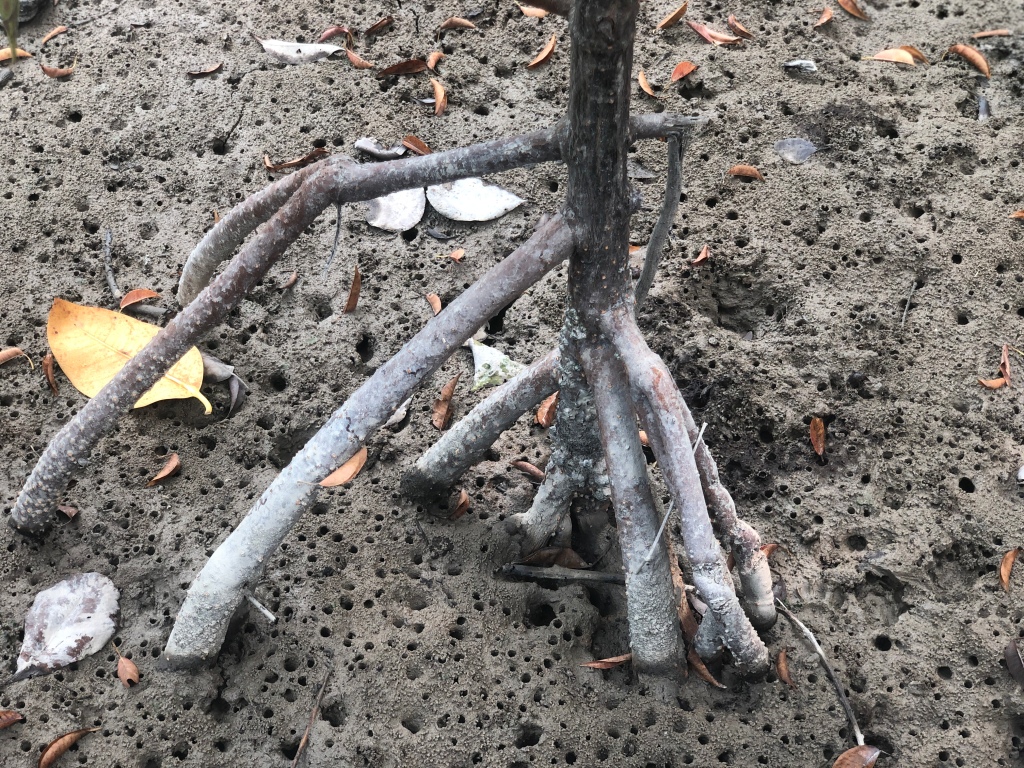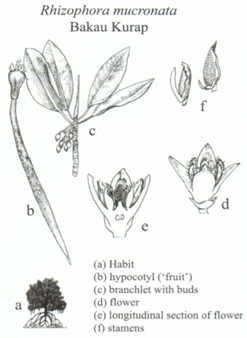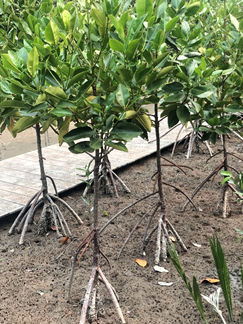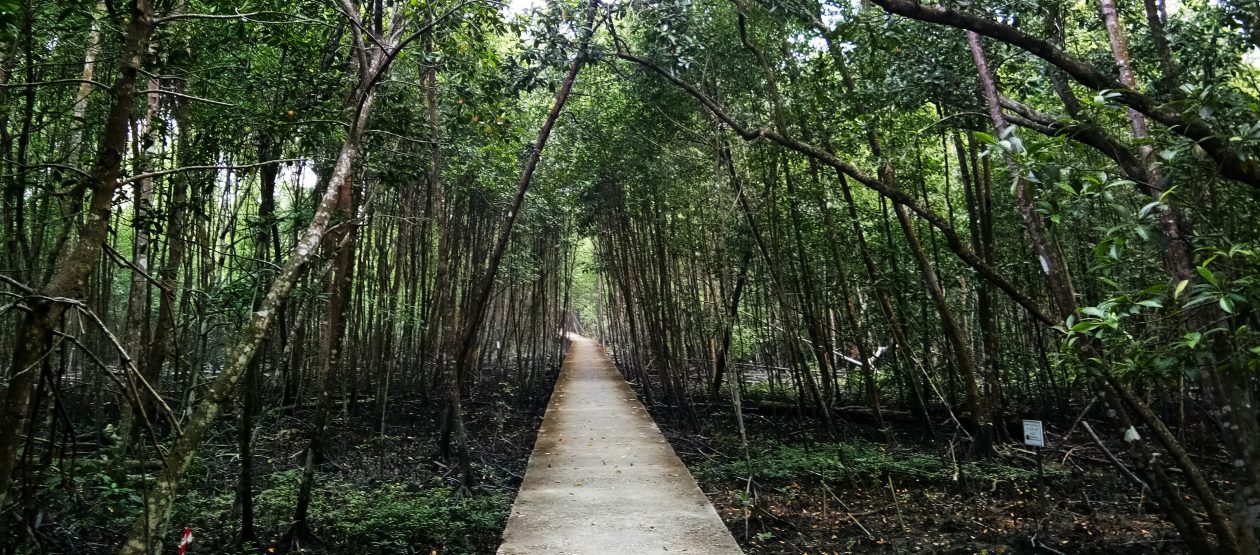CLICK BELOW FOR AUDIO GUIDE
Rhizophora mucronata, also as know as bakau kurap, is a small to medium size evergreen tree growing to a height of about 30m tall and has curved stilt roots. Rhizophora mucronata is found in the Indo-Pacific region on the banks of rivers and on the edge of the sea. It is the only mangrove species to be found in East Africa; native to Africa, Asia, South Pacific and Australia. It more tolerant of inundation than other mangrove species and often forms an evergreen fringe to mangrove areas.

The bark is dark brown with reddish-black patches, scaly and flaky with occasional horizontal fissures around the stem. Broadly elliptic to slightly oblong leathery leaves, measuring 11 – 23 by 5 – 23 cm, opposite arrangement. The leaves are clustered at the end of the twigs. Flower stalks usually have 2 – 5 flowers, each on a 2.5 – 5 cm long individual stalk. Buds are widest near the base and have two 2-lobed leaflets near the base. The fruit is 5-7cm long, wide and brown and shaped like an inverted pear. The seedlings are viviparous, 60cm long, warty and has a pointed tip that benefits the seed when it falls to the mud when it ripens.

It is used to help prevent coastal erosion and in restoration of mangrove habitats. The timber is used for firewood and in the construction of buildings, as poles and pilings, and in making fish traps. The fruits can be cooked and eaten or the juice extracted to make wine, and the young shoots can be consumed as a vegetable. The bark is used in tanning and a dye can be extracted from both bark and leaves.

Various parts of the plant are used in folk medicine. In Chinese and Japanese herbal medicine, a decoction of the bark is used to treat diarrhoea. The Burmese use the bark to treat blood in the urine and the Indochinese use the roots to contain bleeding.
It may also be planted to protect bunds and dykes. Seedlings that have been dried in the shade for several days before planting avoid being eaten by crabs. It is believed the process causes accumulations of tannin in the tissues.
